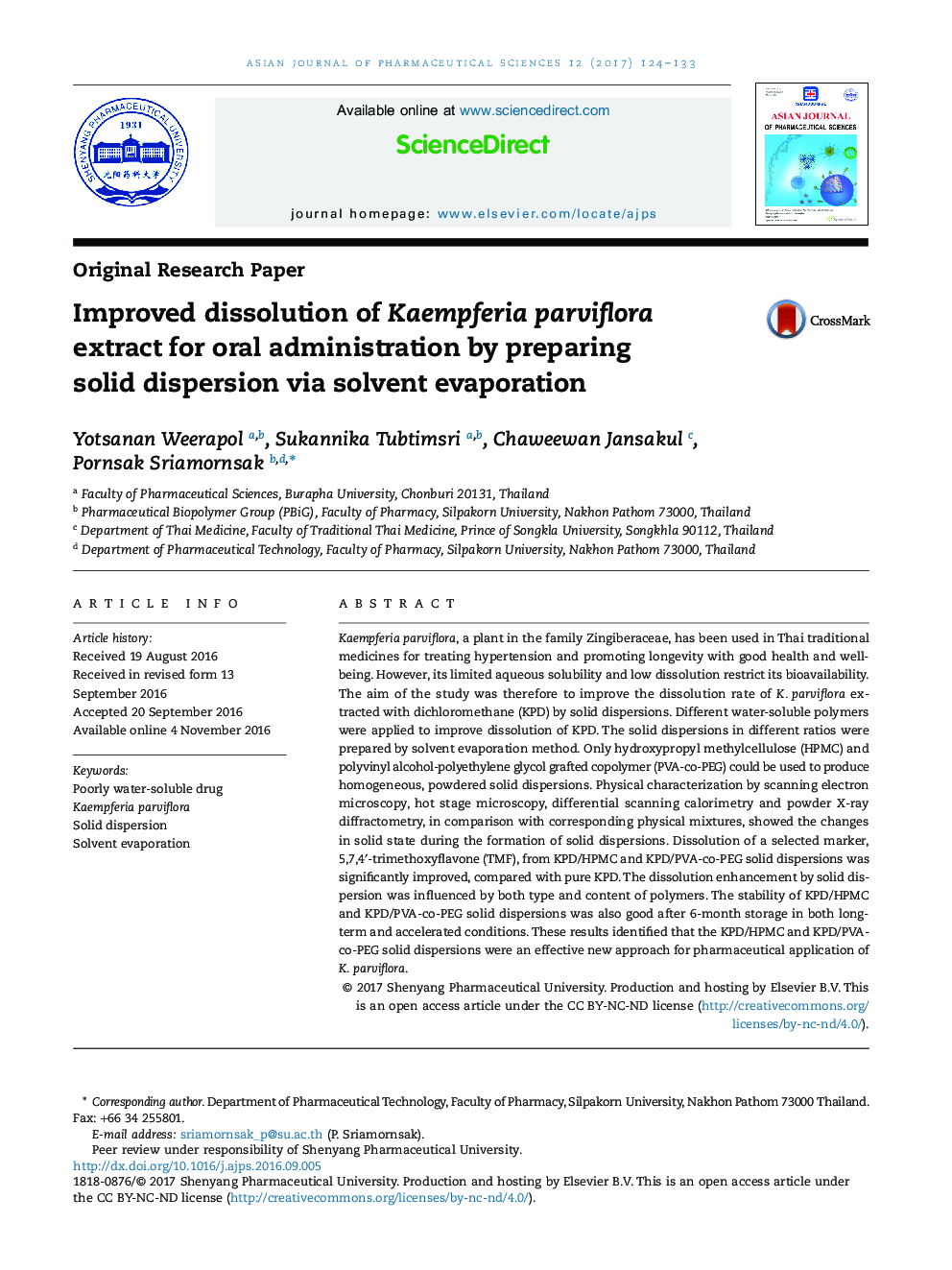| Article ID | Journal | Published Year | Pages | File Type |
|---|---|---|---|---|
| 5549593 | Asian Journal of Pharmaceutical Sciences | 2017 | 10 Pages |
Kaempferia parviflora, a plant in the family Zingiberaceae, has been used in Thai traditional medicines for treating hypertension and promoting longevity with good health and well-being. However, its limited aqueous solubility and low dissolution restrict its bioavailability. The aim of the study was therefore to improve the dissolution rate of K.âparviflora extracted with dichloromethane (KPD) by solid dispersions. Different water-soluble polymers were applied to improve dissolution of KPD. The solid dispersions in different ratios were prepared by solvent evaporation method. Only hydroxypropyl methylcellulose (HPMC) and polyvinyl alcohol-polyethylene glycol grafted copolymer (PVA-co-PEG) could be used to produce homogeneous, powdered solid dispersions. Physical characterization by scanning electron microscopy, hot stage microscopy, differential scanning calorimetry and powder X-ray diffractometry, in comparison with corresponding physical mixtures, showed the changes in solid state during the formation of solid dispersions. Dissolution of a selected marker, 5,7,4â²-trimethoxyflavone (TMF), from KPD/HPMC and KPD/PVA-co-PEG solid dispersions was significantly improved, compared with pure KPD. The dissolution enhancement by solid dispersion was influenced by both type and content of polymers. The stability of KPD/HPMC and KPD/PVA-co-PEG solid dispersions was also good after 6-month storage in both long-term and accelerated conditions. These results identified that the KPD/HPMC and KPD/PVA-co-PEG solid dispersions were an effective new approach for pharmaceutical application of K.âparviflora.
Graphical AbstractDownload high-res image (47KB)Download full-size image
